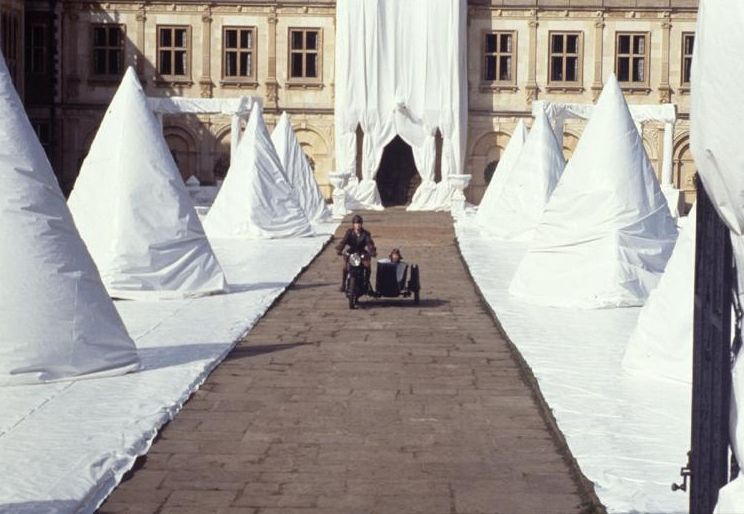Not quite twenty years ago a single image in a movie spawned – for me – a whole new way of looking at gardens.
It was just a passing moment in Sally Potter’s Orlando. If you haven’t seen this movie, you should. It’s greatest relevance to gardening and gardeners is that it’s a movie of a semi-biographical novel based on the life of Vita Sackville-West (creator of the garden at Sissinghurst), written by Virginia Woolf. As the character Orlando spans four hundred years and morphs from male to female in the course of the movie, it seems to me that Orlando is also generally representative of the heir to Knole (the seat of Lord Sackville), as well as specifically to VSW (as her original head-gardeners charmingly called her, when I met them in the early ’90’s).

But the film Orlando also a visually sumptuous experience, and contains more stills that I’d happily frame and hang on a wall than any other movie I know.

What I loved about the one image mentioned in the intro was that it started me on the habit of imagining virtually every garden I’ve visited, or worked on, wrapped in a white sheet. I found that by doing so I could get rid of all the detail – all the flowers and all the ‘featurism’ and consider the garden as a 3D sculpture we can stand in, as an entirely spatial experience. It’s not that you want to permanently do away with this detail, but that it’s hard to analyse spatial strengths and weaknesses in their distracting presence.
Anyway, I loved this image, and wanted to use it to back up numerous talks and include it in The Gardenist (the book, when I wrote the original manuscript ten years ago), but was never able to track it down.
Then, last Saturday morning, about five years since my last attempt, I tried googling it again. Voila!
Thank you Sally Potter. I shall be forever in your debt.

Cristo!
Totally. Don’t know why it took this image to generate this new train of thought when I’d been familiar with the work of Christo for years. Probably because its a garden – albeit fake, as the topiary cones that are apparently wrapped are not actually there at Hatfield. As it happens, the point that’s being made is that the house and garden have become preserved (like furniture draped with sheets), and have no current life.
OK – so just to add to the train of thought Michael… it’s actually Cristo at Hatfield, plus Two Fat Ladies 🙂
Well those two fat ladies, Christo, Hatfield and Sally Potter all taught me an important lesson..
I do like the illustration Michael – one of the best techniques when teaching drawing is to encourage students to visualise the negative – i.e. the space between objects.
I haven’t got so many spare white sheets, but in a similar way I find it helpful to see shapes and often walk about my garden (glass of wine in hand) as darkness is falling – and in this way I notice form rather than flowers and fluff…
Seeing this image tends to offer me more the value added to a building via that of its established garden and ornate entrance. I often say the same about the front entrance of a property on approach to its gates, pillars and driveway etc, much like an ordinary face becoming more radiant by that from a beautiful smile via its wonderfully straight and white glowing teeth. Once removing those elements from the entrance to a building it seems to shed a great share of its overall intrigue. If they’d covered or removed the building and kept the garden and ornate entrance open to see, I do believe the approaching interest would be far less diminished than is within this image. As much as I admire architecture, it is often a face without a smile when without a wonderful entrance and landscape.
Fun! And you build beautifully to the climax.
Possibly my most overwhelming moment of my whole garden visiting pilgrimage was in the West Garden at Hatfield, the rococo shapes of the beds around the round central pond, surrounded by the elaborate, rather french shaped yew hedges, in tern surrounded by the rectangular lime parterrre with the medieval palace beyond on the left and the massively impressive Tudor house ahead of me. But Right in front of me one of the paisley rococo flowerbeds thrust thin curved point into the lawn paths. And in that space there flowered an annual flox and a california poppy. The immensity of the setting, combined with the simple detail of that moment upsized my gardening ambition a hundredfold. I too wanted to stun with the simplest detail in the grandest scheme. I don’t mind to admit that I never managed to begin to equal this, though, 🙂